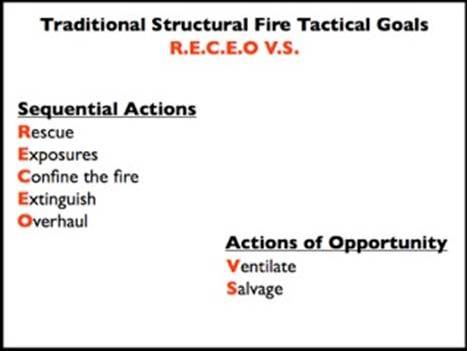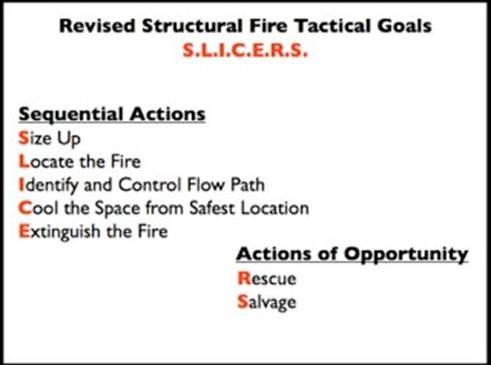By Eddie Buchanan
By now, most of us have at least heard of the latest fire dynamic research coming out of the National Institute of Standards and Technology (NIST) and Underwriters Laboratories (UL). They have confirmed what some overseas fire departments have shared: traditional fire suppression tactics in the United States may need revision. Thus, the debate has ensued on which approach to tactics is best and how to move forward. And its not just our tactical plans that may be in question, our professional standards, publications and instructional content are all based on a tactical approach where an “aggressive interior mindset” is the cornerstone of tactical operations.
Thankfully, a large portion of the fire service seems interested and willing to incorporate the latest research into their operations. I will assume that you are familiar with the various studies from UL and NIST. If you are unfamiliar with them, stop here and go review those documents.
The current challenge is figuring out how to use the research in our existing tactical plans. Hanover (VA) Fire & EMS struggled with this idea and spent considerable time trying to make these concepts “fit” into the existing mindset. Early on, this struggle was apparent; we created terms like “transitional attack” to fit the round peg into the square hole. After some trial an error, it became apparent that, maybe, we need a round hole for the round peg. Perhpas we are having trouble fitting the latest research into the old plans because they simply do not fit? Could the manifestation of natural resistance to change blinding us from the path forward?
RELATED
Modern Fire Dynamics and Legacy Construction: Lessons Learned
Commentary: Why Aren’t More Firefighters Making the Change to Intelligent Firefighting?
Many of the actions or concepts recommended by the latest research are not new. Those of us from the pre-self-contained breathing apparatus (SCBA) adoption era find these concepts very familiar. In fact, with some research, you will find similar concepts in historic books from Lloyd Layman and early editions of the Essentials of Firefighting textbook. Our modern challenge is how we process these “new” concepts mentally. It is difficult to break the “muscle memory” of the old mindset; we have developed these mental patterns through years of repetition.
This mental muscle memory has manifested itself on tactical boards in command vehicles around the United States with a common acronym inscribed on them that represents our traditional tactical mindset: RECEO VS. The first set of letters were intended to be sequential, i.e., you do those tasks in order. The second set, VS, were intended as “actions of opportunity,” meaning they could occur as needed and at any point during the incident (Figure 1).
Figure 1

Those of us who are “chiefly age” likely had this acronym tattooed on our brains as part of our training when coming up through the ranks. This concept has served us well over the years, and the authors of RECEO VS certainly deserve a tip of the hat for their contributions. Given what we knew and believed at the time, the RECEO VS concept gave us a platform to make decisions on the fireground for many years. But what if our old friend RECEO VS is the infamous square hole? Is it possible that we are struggling with incorporating the latest tactical research because we are trying to place it in an outdated tactical mindset? And again, please note that I have nothing but the highest respect for the previous acronym. However, eventually, most things change.
A Fresh Approach
A handful of firefighters took to the white board armed with the firm understanding of the latest fire dynamic concepts looking to reframe the tactical mindset. The goal was to create a “round hole” that would work better with the “round peg,” which we now understood to be true. After some brainstorming and discussion, the SLICERS acronym was born (Figure 2). Great care was taken to ensure the concept was sound and quick phone calls were made to engineers to make sure it was technically correct. It was also vetted by the field to see if it would stick. Would it be something that firefighters and incident commanders would recall under stress?
(The actions included in the SLICERS acronym occur very early in the arrival of the fire department at working fire. In some cases, the whole plan can be executed prior to the arrival of additional units.)
Figure 2

As a tribute to its predecessor, it also has sequential actions and actions of opportunity. Let’s visit with each acronym to ensure their steps are clear.
Sequential Actions: To Take Place in Order
- Size-up. Size-up remains a cornerstone of tactical operations. We will still make our 360° laps and declare operational modes. We will communicate the conditions, building construction, and request additional resources, if needed.
- Locate the fire. This is key. You want to know where the fire is at the moment. More specifically, where are the superheated spaces that pose a risk to firefighters and the occupants of the building? It was discovered in the NIST Research conducted at Spartanburg, South Carolina, during research funded by the Department of Health Services through the International Society of Fire Service Instructors (ISFSI), the importance of taking a thermal imaging camera (TIC) on the initial 360° lap. It allows the incident commander (IC) to quickly identify which parts of the building are hotter than the others, assuming fire has not self-vented. It is not intended to get into TICs, temperature and glass. You can simply tell this is hotter than that.
- Identify and control the flow path. Once the hotter locations are identified in the building, determine the presence of a flow path. If one exists, attempt to control the flow path by controlling the door. If a flow path does not yet exist and the fire has become vent-limited, do not create one until you are ready to do so. In the training environment, giving officers open doors on arrival will help build the skill of recognizing them and initiating control early in the operation.
- Cool the heated space from the safest location. Given the information from size-up, location of fire, and flow path, the IC makes a decision on where and how to cool the superheated areas of the building. The goal in this step is to reduce the immediate thermal threat to firefighters so that the fire may be eventually extinguished. Water may be applied from the exterior—or whatever ever makes sense—understanding the goal of reducing the thermal threat. In smaller, residential settings, a window may allow access to the seat of the fire; that is a huge bonus! In large buildings or attic fires, the crew may have to enter the structure to gain access to cool the heated compartments.
- Extinguish the fire. Once the thermal threats have been controlled, the fire should be extinguished in the most direct manner possible. The IC should recognize the potential for the thermal threat to return and should move to extinguish the fire quickly. Fire crews can still expect plenty of interior firefighting! The seat of the fire still must be extinguished, and the overhaul work that was there in the past will still be there, awaiting for those eager to exercise their given rights to practice forcible entry skills.
Reinforce that whenever crews enter an immediately dangerous to life and health condition during a structural fire the proper firefighter rescue capability should be established prior to their entry.
Actions of Opportunity: May Occur at Any Time
- Rescue. The IC should consider the potential for rescues at all times. Firefighters should always be prepared to remove trapped or endangered occupants. Reinforce that often the best action the fire department can take is to suppress the fire. The IC and fireground officers must make a rapid and informed choice on the priority and sequence of suppression activities vs. occupant removal. As life safety is the highest tactical priority, rescue shall always take precedence. The IC must determine the best course of action to ensure the best outcome for occupants based on the conditions at that time.
In other words, we still go get them! The concept of vent-enter-search has been updated to include “isolate,” referring to the importance of door control and compartmentalization. Now deemed “VEIS,” truck companies play an important roll in quickly placing ladders and searching rooms of probable rescue. Additionally, once the thermal threat has been managed, normal interior search operations should occur. This is one of the more controversial positions in the “new method.” But it makes sense when played out on the fireground. VEIS missions can be carried out for immediate rescues, and truck company crews can be ready to open the door and create a flow path once the thermal threat has been controlled.
-
Salvage. Firefighters should use compartmentalization to control fire spread and smoke whenever possible. Salvage where you can, when you can. (For overhaul, we are assuming that you will not forget to do that before you leave.)
You’ve probably noticed by now that Ventilation is missing. Given the research, ventilation has been reclassified as a specialty action. It requires direct orders from the IC and generally occurs after the main body of fire has been subdued. No longer can anyone break anything at anytime for no particular reason. Every ventilation opening can influence the flow path, and that requires the approval of the IC. Yes, there will be times when windows must be taken, but take care to match that opening with a closed door whenever possible.
RELATED
Top 3 Tactical Changes from Firefighter Research
Eddie Buchanan: The Tipping Point on Fire Science
Eddie Buchanan and Ray McCormack: SLICERS and DICERS
Implementation
Change in the fire service is seldom welcomed with fanfare and joy. SLICERS is an idea that requires practice to develop muscle memory. Suppression crews will need to apply it in training under controlled conditions using scenarios consistent with the local fire challenges. Training officers should design drills based on the local construction and occupancies.
Like most ending relationships, we’ll remember our old friend RECEO VS fondly, and some will miss it terribly. But in time, we’ll get over that relationship and move on. RECEO VS was a great friend to the fire service during some tough times. But to move on and make firefighters safer, maybe it’s time we “stop seeing each other.” The acronym SLICERS is just one way to get the new research onto the fireground; surely, there are other fish in the sea. The important thing is to take action. Consider this method or create your own. Whatever you do, when it comes to the latest fire dynamics research, learn it, understand it, and incorporate it.
Click HERE to view the IFSFI sample Standard Operating Guideline on Residential Firefighting Strategy & Tactics.
 Eddie Buchanan began his fire service career in 1982 and is a division chief with Hanover (VA) Fire & EMS. He is the immediate past president of the International Society of Fire Service Instructors and serves on the executive advisory board for Fire Engineering and FDIC.
Eddie Buchanan began his fire service career in 1982 and is a division chief with Hanover (VA) Fire & EMS. He is the immediate past president of the International Society of Fire Service Instructors and serves on the executive advisory board for Fire Engineering and FDIC.

